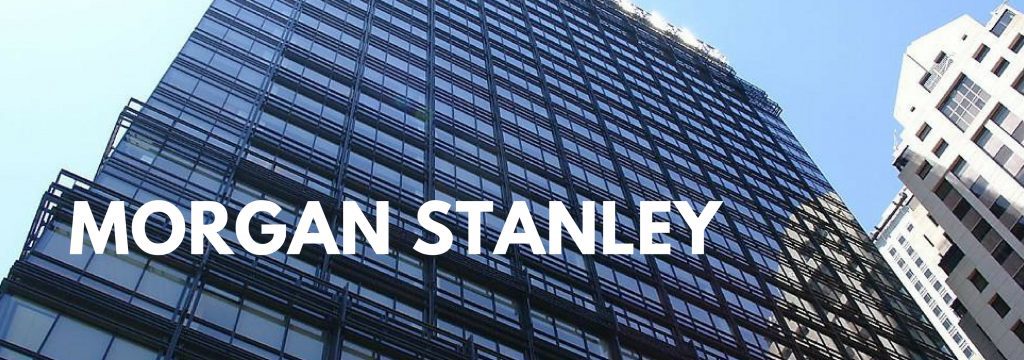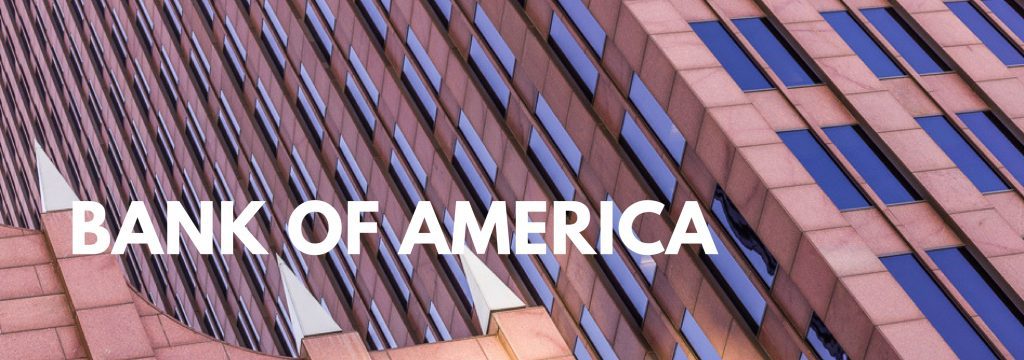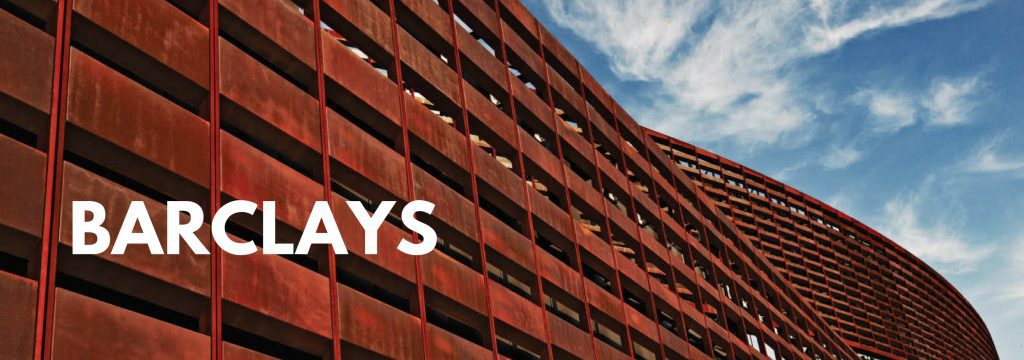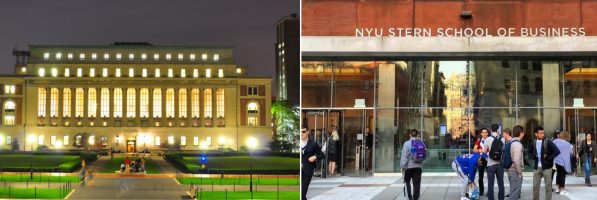Breaking Down the 2018 Financial Times Top Finance MBAs List

Big technology companies might be attracting top MBA talent, but they’re not the only ones in the running. Though the finance sector hasn’t seemed as popular in recent years, MBA employment is still holding its own in the industry. The difference is the types of jobs that the finance and banking sector are offering.
The finance industry offers a range of options when it comes to jobs. MBA students have the opportunity to work as part of in-house teams developing new digital strategies, working for fintech companies, and more. Finance and banking are still critical employers of MBA graduates. On average, 30 percent of graduates from top business schools around the world went into a career in finance. Continue reading…
What are the Highest Paying Finance Companies for MBAs?

Let’s face it: even if money isn’t the number one reason you are looking into an MBA, it’s probably pretty high on the list. We know that earning an MBA can not only lead to a raise in salary, but can open the door to even more career opportunities that can further increase your earning potential. For those with money on the mind, there’s a lot to consider when pursuing your MBA, from which specialization will give you the most ‘bang for your buck’ to what kind of future employers most value their MBAs.
One of the top industries that consistently makes the list when looking for the most valuable MBA specializations is finance. With an average salary of $121,000 USD for jobs within the finance industry, having or working towards your MBA is a reality of the field. But for those who are willing to put in the work, finance companies are willing to pay.
The 5 Best Paying Finance Companies For MBAs

One of the places where MBAs are earning top dollars is Morgan Stanley, a financial services firm that provides a number of financial advising services, such as wealth management, investment banking, sales and trading, research, and more. Morgan Stanley is an active recruiter of diverse business school and MBA graduates, with their most recent cohort of recruits coming from 56 different countries. The company offers graduates a number of different ways to get their foot in the door, including a number of summer internships and fellowships designed specifically for MBAs.
It’s clear that Morgan Stanley believes in investing in the MBAs on its staff. While the average salary at the company is in the $75,866 range for those with just a bachelor’s degree, employees have reported average salaries around $100,477 after earning an MBA.
Depending on the job and department within the company, earning potential can be even higher. Within the firm’s investment banking department, salaries can reach over $200,000. One reason for Morgan Stanley’s high numbers come from their reputation to dole out tremendous bonuses, which—combined with the base salary—makes this company one of the highest paying firms for MBAs in finance.

Godman Sachs Group, Inc., a multinational finance company that focuses in global investment banking, investment management, securities, and a number of financial services. Founded in 1869, the company today has 34,000 employees throughout the world and revenue of more than $42 billion. Goldman Sachs makes a number of opportunities available to recent MBA graduates and current students, such as the Goldman Sachs MBA Fellowship which recognizes outstanding business students with a role as summer associate and $35,000 award in addition to the associate’s salary.
According to Payscale, MBA holders at Goldman Sachs earned a median salary of $96,844. With such a high number of diverse MBAs working for their organization, this average includes the salaries of finance managers, CFOs, financial analysts, financial controllers, and many other positions that MBAs might hold within the company.

Bank of America began more than a hundred years ago, undergoing a series of expansions and mergers that ultimately led the company to its role as one of the ‘Big Four’ banks of the United States. Today, Bank of America makes more than $87 billion in revenue and employees a whopping 208,000 employees throughout the world. Through campus recruiting, diversity fellowships, and summer internships, Bank of America actively seeks talented MBA students and recent graduates. Through the full time analyst and associate programs, graduates work full-time in a structured program that offers consistent training, development, and social opportunities.
Bank of America employees with MBA degrees report an average salary of $101,522. Programs dedicated to hiring and training MBAs, such as the Bank of America MBA Leadership Development Program, matches these exceptional salaries, offering recent graduates impressive professional development opportunities as well as salaries ranging from $94,918-$101,733.

Headquartered in Zürich, Credit Suisse Group is a multinational financial services holding company with a heavy presence in the United States. With more than 48,000 employees worldwide, Credit Suisse in 2014, was said to hold more than $888 billion of assets under management. Credit Suisse offers several pathways for MBA graduates to become involved at their company, offering positions as full-time analysts, associates, and career starters.
Depending on the role, there can be a wide range of salaries recent graduates might earn when they join Credit Suisse in an analyst positions. Positions like investment banking analyst or business analyst are likely to make upwards of $70,000-80,000, with the opportunity to turn your degree into much more as you move up through the ranks. The average salary for an MBA with a finance specialization, according to Payscale, is $120,414.

Barclays, a British multinational bank and financial services company, is well-known today for its global reach, employing more than 120,000 people and operating in more than 40 countries. Like the other high-paying financial firms on this list, Barclays offers a number of opportunities to draw talented MBA graduates to their company. Programs like Barclays MBA Ambition gives MBA candidates the chance to get a summer internship at the company even before beginning their program, allowing them to focus fully on school once it starts while feeling confident about the future. This fellowship, for example, offers $45,000 toward first-year tuition with the opportunity for an additional $45,000 in their second year if they choose to join Barclays full-time after graduating. On average, salaries for recent graduates can range from $69,588-$74,898.
The Future of Employment at Philly Business Schools

When considering where to get your MBA, one of the first questions you should ask is, “What will my employment outlook be?” After all, the reason you get an MBA is to improve your career. But what is important when it comes to employment trends at the leading business schools in Philadelphia? There are quite a few different statistics you should look at.
Important MBA Employment Statistics
To choose an MBA program based on your future career success, there are a few questions you need to answer.
- What industry do I want to work in and does the school place a majority of their students in that industry?
- What percentage of students receive and accept job offers? The same for internships?
- Self-employed or entrepreneurship data?
- What salary can I expect?
- Where do most students end up living and work?
- Who are the top employers?
You also want to look at any trends between years. For example, the percentage of students receiving job offers should increase year-over-year. And if you see a shift from the consulting industry to financial services, you want to be aware that the school could be changing its direction.
So, what does employment look like for three of the top Philly business schools?
The Wharton School
At the Wharton School at the University of Pennsylvania, the employment trends year-over-year are fairly consistent. While the percentage of students reporting job offers dropped from 2016 to 2017, part of that reason may be the increased number of students seeking employment (75.2 percent vs. 79.1 percent).
As for the increase in median salary, that can be attributed to inflation as well as an increase in job salary for each industry including professional services rising from $160,000 in 2016 to $180,000 in 2017. The location of jobs also changed slightly between 2016 and 2017, but that could be due to various reasons including the current state of international affairs for the U.S.
| The Wharton School | 2017 | 2016 |
|---|---|---|
| Percentage of students reporting job offers | 97.1 percent | 98.3 percent |
| Percentage of self-employed students or those starting their own business | 4.8 percent | 5.8 percent |
| Median Salary | $130,000 | $125,000 |
| Location Choices | 88.7 percent U.S. 11.3 percent International | 86.9 percent U.S. 13.1 percent International |
As for where MBA students at the Wharton School gain employment, there are a few important notes. The same top three industries—financial services, consulting, and technology—attracted students in both 2016 and 2017. However, the percentages were a little more evenly distributed in 2017. As for the companies hiring students, most of the same companies showed up each year.
| Top Three Industries | Percentage of Students (2017) | Percentage of Students (2016) | Companies Employing Two or More Students (2017) |
|---|---|---|---|
| Financial Services | 32.7 percent | 35.1 percent | Barclays, CITI, and HSBC |
| Consulting | 28.3 percent | 26.6 percent | A.T. Kearney, McKinsey & Company, and Boston Consulting Group |
| Technology | 16 percent | 12.6 percent | Adobe Systems, Amazon, and IBM |
Penn State Smeal College of Business
Pen State’s Smeal College of Business is consistent year-over-year in regards to its MBA employment trends. The percentage of student reporting and accepting job offers increased between 2016 and 2017 from 88.9 percent to 91.5 percent. However, the median salary stayed consistent at $105,000, and the hiring trend of most MBA students staying in the U.S. also remained the same.
| Penn State Smeal College of Business | 2017 | 2016 |
|---|---|---|
| Percentage of Students Reporting Job Offers | 91.5 percent | 88.9 percent |
| Median Salary | $105,000 | $105,000 |
| Location(s) | 98 percent U.S. 2 percent International | 96.5 percent U.S. 3.5 percent International |
As for where MBA students at Smeal College gain employment, there are a few important notes. While the same industries made the top four each year, where they placed changed. In 2016, the top industry was consulting (25 percent) while that changed to manufacturing in 2017 (20 percent). In 2017, retail also moved into tie consulting for the second most sought-after industry, while technology actually decreased year-over-year (23 percent vs. 15 percent).
| Top Four Industries | Percentage of Students (2017) | Percentage of Students (2016) | Companies Hiring |
|---|---|---|---|
| Consutling | 18.5 percent | 25 percent | Deloitte, EY, and PricewaterhouseCoopers |
| Technology | 15 percent | 23 percent | Amazon, Apple, and Dell |
| Manufacturing | 20 percent | 14 percent | Amphenol Corp, CHEP, International Inc. |
| Retail | 18.5 percent | 14 percent | Anheuser-Busch, Proctor & Gamble, and Johnson & Johnson |
Rutgers Business School, Camden
In 2017, the Financial Times ranked the Rutgers MBA as the best program for MBA employment across Big 10 schools. In 2016, Bloomberg Businessweek also ranked Rutgers as the best MBA program for job placement in the U.S. This indicates a relatively steady year-over-year employment trend for MBA students.
As for the median salary of a Rutgers MBA, students in 2017 could expect to earn $95,680. As for the most popular industries, they were:
- Pharmaceutical/Biotech/Healthcare: 46 percent
- Consulting: 13 percent
- Consumer Products: 13 percent
- Other: 14 percent
How Toronto Schools Can Help You Pay for Your MBA

Earning your MBA can be an expensive prospect. In Canada, tuition at the most expensive MBA programs can cost more than $100,000 for full-time and part-time students. This can be difficult for some low-income applicants.
So, what are some Toronto schools doing to help offset the cost of tuition, living, and other expenses to pay for your MBA? Continue reading…
School v. School: NYU Stern or Columbia Business School?

What happens when you pit two of the New York metro’s top business school’s against each other in a head-to-head duel of MBA might? It’s a school vs. school showdown, as we compare Columbia Business School to the Stern School of Business. Let’s take a deeper dive! Continue reading…
USC Marshall Prof. Larry Harris appointed to New SEC Advisory Committee

Larry Harris, Fred V. Keenan Chair in Finance and professor of finance and business economics at the USC Marshall School of Business, has been appointed to the SEC’s Fixed Income Market Structure Advisory Committee, according to a press release from the school.
Harris, who is known as one the world’s top experts on market structure, joins a committee that will advise the SEC on the efficiency and resiliency of fixed income markets and identify opportunities for regulatory improvements. The committee’s initial focus will be on the corporate bond and municipal securities markets.
“Individual investors are highly active in fixed income markets, both directly as retail investors and indirectly through various types of funds,” said SEC Chairman Jay Clayton in a statement. “This committee will help the Commission ensure that our regulatory approach to these markets meets the needs of retail investors, as well as companies and state and local governments.”

USC Marshall Professor Larry Harris/Photo via USC
Harris is a perfect candidate to confront this issue: As former chief economist of the SEC between 2002 and 2004, he wrote the book on the topic, title “Trading and Exchanges: Market Microstructure for Practitioners,” which is called the defining textbook in the field.
While serving as the SEC chief economist, Harris also worked to ensure bond transaction prices would be public. He would study that topic once again in his 2015 paper, “Transaction Costs, Trade Throughs, and Riskless Principal Trading in Corporate Bond Markets.” In his research, Harris notes that “bonds now trade in markets very similar in structure to the markets in which NASDAQ stocks traded 30 years ago. A few small structural changes substantially decreased the costs of trading NASDAQ stocks. Similar changes can substantially reduce the $26 billion that investors now pay each year to trade bonds.”
This research led to his return to the SEC and its new Fixed Income Market Structure Advisory Committee. Along with Harris, the committee is comprised of a diverse group of outside experts, including individuals representing the views of retail and institutional investors, small and large issuers, trading venues, dealers, and self-regulatory organizations.
